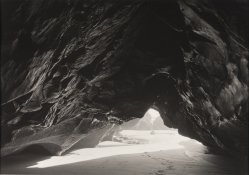Ko.Fe.
Member
It is mixed workflow forum.
I measure highlights, shadows and take it in the middle. Develop as usual. I prefer negatives to be more dense.
In the darkroom I mask shadows and burn highlights more. It works even with single grade papers. Some are using split printing on RC. As long as you aren't using something special, here is no big deal.
For scans negative has to be less dense.
And don't try too use film as surveillance technicue. If you can't see what is in the shadow, why film has to see it?
I measure highlights, shadows and take it in the middle. Develop as usual. I prefer negatives to be more dense.
In the darkroom I mask shadows and burn highlights more. It works even with single grade papers. Some are using split printing on RC. As long as you aren't using something special, here is no big deal.
For scans negative has to be less dense.
And don't try too use film as surveillance technicue. If you can't see what is in the shadow, why film has to see it?






